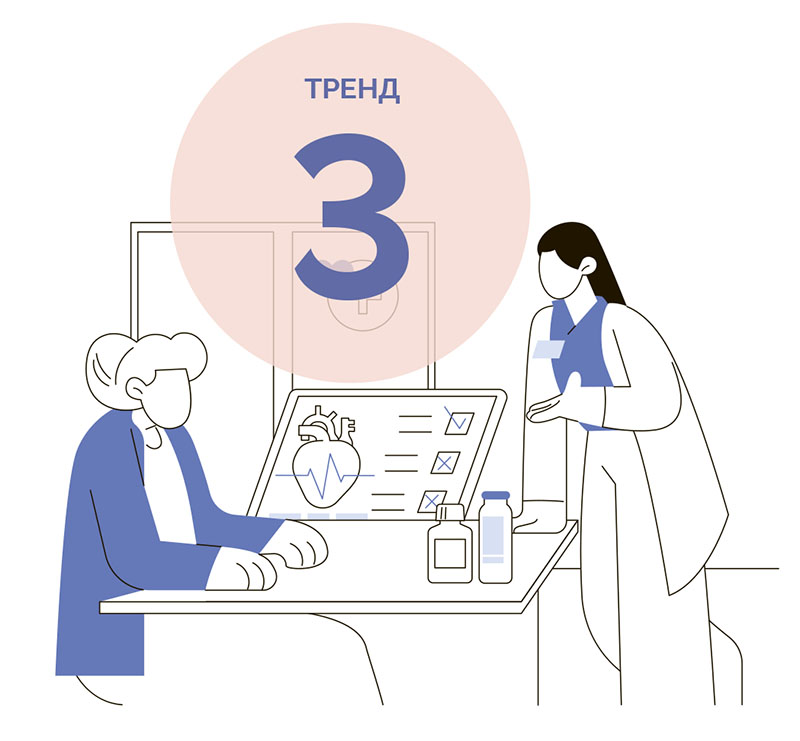Russian medical marketing is going through an interesting period. Valery Domashenko, founder and owner of the Domashenko Digital Consulting Group, talks about trends, new accents, and peculiarities of work in the new realities.
WHY DO WE NEED MARKETING
Attracting and retaining patients is just as challenging as making the right diagnosis and finding effective treatment. And it’s medical marketing that solves this problem. It is common in society to perceive medicine, doctors and hospitals as a social function focused on the protection of life and health. But every private clinic is a business. And for it, effective marketing is a point of growth and an essential tool for attracting and retaining patients.

For several decades, since the emergence of private medicine, most clinics in Russia either did not engage in marketing and lived by word of mouth, as the level of competition in this area was very low, or made efforts only to attract primary patients. But things have changed in the last year and a half. Gone are the two largest advertising platforms, and clinic management has taken notice that the main task of marketing is working with patient bases. It is the regular clients of the clinic that provide 80% of all sales, while the primary patient flow serves mainly to replenish the base, from which there is always a small natural outflow.
“Medical marketing is different from conventional marketing by having consumers in real pain, a high sensitivity to any reputational errors and even reservations, and by the expertise of the field. After all, we trust doctors with the most precious thing we have — our life and health, and their professionalism is extremely important to us.”
LOCALIZATION
Russian marketing is becoming increasingly isolated and is beginning to differ from international marketing. The reason is simple: the tools have changed. Some popular and working promotion channels have gone, and others have appeared to replace them, such as Telegram. Besides, personal marketing has always played an important role in Russia, and in some parameters we are now ahead of other countries, because today we have a much more competitive and aggressive market, and the mastery of many marketing tools is at a higher level of sophistication and accuracy.

MOBILE CONTENT
Medical sales are directly linked to individuals, who choose mobile content more than 80% of the time. And in competitive niches of medical marketing (e.g., dentistry), we’ve arrived at the “mobile-only” era. In fact, today only mobile advertising is the point of audience consumption and brings the expected economic impact.

INCREASING COMPLEXITY OF ATTRIBUTION MODELS
It’s all about the paths that a patient takes to get to the clinic. A simple example: a person saw an advertisement on TV or on the transport, typed a query in the search engine Yandex, got to the clinic’s lending, read it, went to the site with reviews, read them and then called the clinic. It is traditionally thought that the patient was attracted to the last contact (review site) in the chain, whereas what actually worked was the branded advertisement that the person was paying attention to. And medical marketers need to figure out this complex multi-step attribution, because if they lose any of the links in this chain, such as over-allocating money to review site advertising and forgoing branded advertising, they’ll get a negative result.

DENTAL CLINICS NOW HAVE TWO WAYS TO GROW
If you are willing to work on a mass scale, in the mid-price segment or lower, it is important for you to have aggressively priced consultations that attract patients. Such an initial diagnostic consultation is a marketing tool to both attract and filter out non-core patients.
A premium clinic should preferably build a personal brand, work with events that will interest and attract the right level of patients. It’s a longer and more complicated story, but in the end, this path can bring you audience loyalty and financial success.
BAD FAITH
It’s a negative trend, but it’s impossible not to talk about it. High competition in the market of dental services, especially in the middle price segment, has led to the fact that many clinics are fighting unfairly with competitors on the principle of “who better cheats, the one who wins”. For example, they advertise the extremely low cost of their services, while the actual amount in the check may be an order of magnitude higher than the stated. This helps to attract primary patient flow, but does not build a base of loyal customers.

CUSTOMER BEHAVIOR RESEARCH
Many clinics still operate on the principle of “what we produce is what we sell”, but this is a big mistake. The modern consumer primarily pays attention to the meanings and legends embedded in a brand. So, if we talk about a phlebology clinic that treats varicose veins with laser, the patient is not buying the service itself, but getting rid of pain and heaviness in the legs, or youth and beauty of the legs, etc. Therefore, it is now very important for clinics to understand who their audience is, how their patients make decisions, and what they are actually buying.

WHAT WORKS
There is no silver bullet that will ensure that every dental practice can successfully grow its business. But there are the right steps to take:
- build a systematic approach to marketing;
- get the planning system in order;
- choose high-margin products that will give the clinic maximum profitability;
- to schedule sales;
- create a pathway for clients to get to the clinic.
After that, you should start actively working across all channels: metering, forecasting, searching for and forming enticing offers for customers, uploading them in all channels and seeing where patients will come from. Bringing the patient to the clinic is only the first step. It is important to make him feel trusted and become a regular customer. To do this, you need to speak to your target audience in a language they understand and offer solutions to the pains patients are experiencing. A large number of medical cases fail for two reasons: firstly, there is no product, i.e. the clinic does not understand who buys what from it, and secondly, internal communications with patients are not properly structured. And all these difficult tasks should be solved not by doctors, but by marketers who are familiar with the specifics of medical sales.


